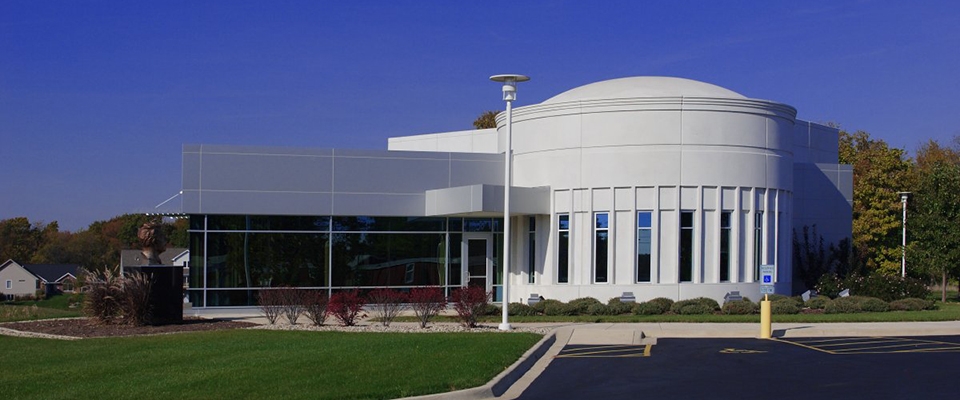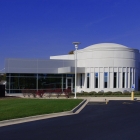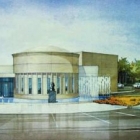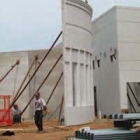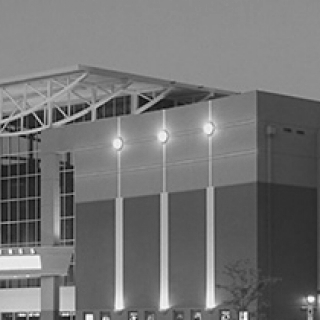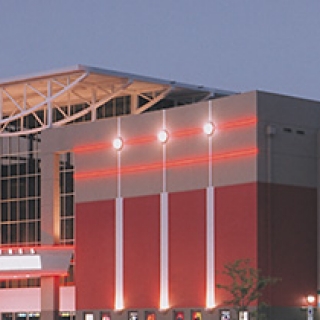- Location:Pekin, Illinois
- EOR:Overly Associates
- Precaster:Raider Precast Concrete, Inc.
- Specialty Precast Engineer:The Consulting Engineers Group, Inc. - TX
- Architect:Architectural Design Group, Inc.
- Contractor:Hein Construction
The Dirksen Congressional Center left its home of 28 years within the Pekin Public Library and moved to a new building also in Pekin, Illinois. The Center, whose mission is to "help people better understand the U.S. Congress and its leaders", had a twofold goal in moving to their own facility according to Frank H. Mackaman. First, it will provide modern office space that will better facilitate day-to-day operations, allow programming flexibility, and accommodate our high use of computer technology. Second, it will provide a separate, climate-controlled archival space that will be used to house historical materials, including our Everett McKinley Dirksen Collection and Robert H. Michel Collection.
The facility is organized into three distinct areas. The office and administrative functions are located within a glass triangle. The conference room, with seating for 25, is located within a precast concrete rotunda. The Center's historical materials are housed within a two story precast cube.
The Consulting Engineers Group, Inc. (CEG) provided Raider Precast Concrete, Inc. with engineering and drafting services on the project. CEG utilized 3-D drafting to detail the curved walls and dome of the rotunda. The dome, which rests on steel beams supported by the rotunda walls, was cast as two half moons. A clay model of the dome pieces was built to assist in evaluating the handling, storing and transportation requirements of the pieces. The use of the 3-D drafting not only allowed the visualization of the various blockouts and reveal patterns but also aided in the production of the shop tickets.
An elaborate forming scheme was developed for the curved wall panels that allowed the reveals to continually follow the curved surface of the panels. Numerous form drawings were generated to assist Raider Precast in building of the unique wooden forms. Thin, bendable plywood was used as a forming base that resulted in a finish and tolerances within the specifications. The concrete mix design consisted of white cement, fine white crushed rock acting as the sand, and a limestone aggregate. The precast panels were then acid etched to enhance the natural white finish. The precast all panels provided three major advantages to the project. First, they offered a virtually maintenance-free architectural finish without resorting to painting or staining. Second, the three-inch insulation within the precast panels eliminated the need for any additional insulation to achieve the specified R-values. Third, the panels were used as load bearing shear walls thus eliminating the need for exterior columns or X-bracing.


